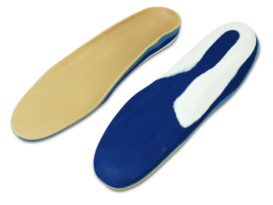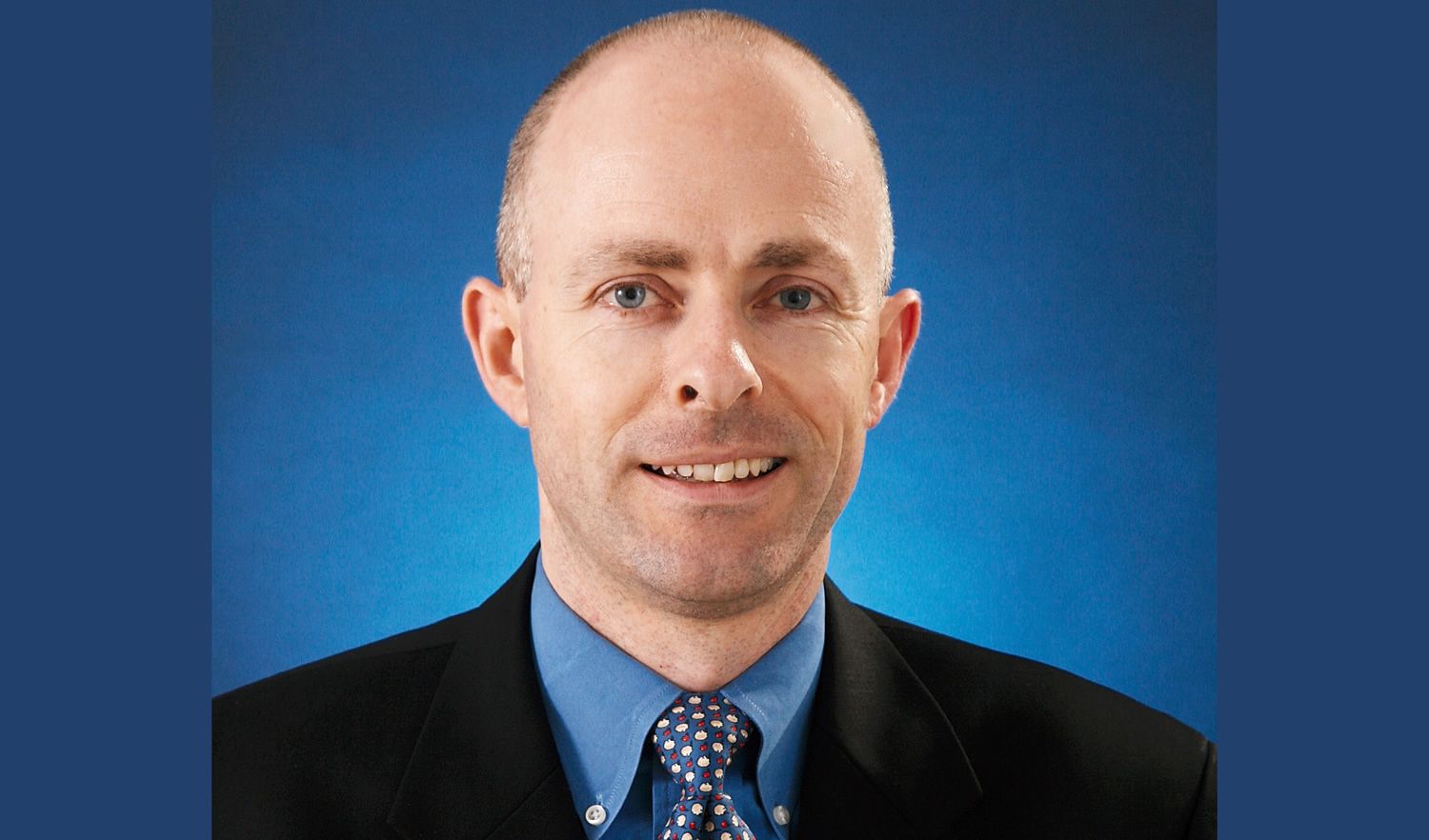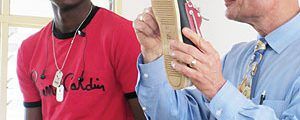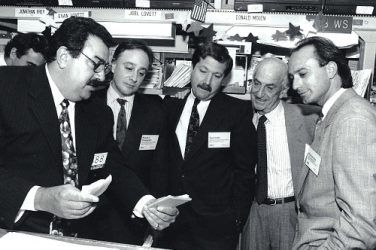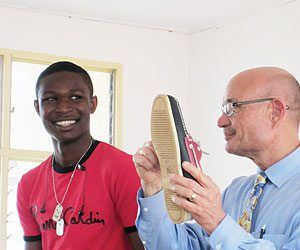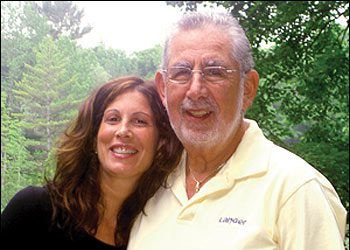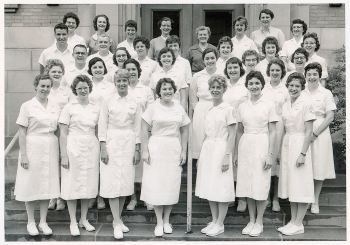In Irish poet Séamus Heaney’s 1995 Nobel Prize acceptance speech, he reflected that his career “became a journey where each point of arrival…turned out to be a stepping stone rather than a destination.” He and Séamus Kennedy, BEng (Mech), CPed, seem to share that view.
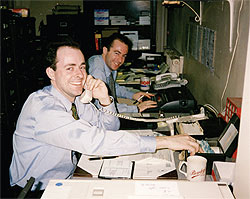
From left: Séamus and Cathal. Séamus’ job was to reach out to clients on the telephone. The original lab was located on East 26th Street in Manhattan. Photographs courtesy of Séamus Kennedy.
Kennedy is co-owner of Hersco Ortho Labs, New York, New York, along with his younger brother, Cathal. He eschews being called an OP&P industry leader, saying that he reserves that title for someone who has made a significant impact on the profession and is more than 70 years old. In his mid-40s, Kennedy doesn’t meet this self-imposed age requirement; however, his qualifications regarding the criterion of “significant impact” are well established. He oversees and is a presenter for the pedorthics education program at the American Academy of Orthotists and Prosthetists (the Academy) Annual Meeting & Scientific Symposium; he has authored and been interviewed for many articles related to pedorthics and foot and lower-limb biomechanics; he speaks regularly on the manufacturing and fitting of custom shoes and orthotics; he is called upon by OP&P practitioners and physicians to consult or help with unusual cases; and he is a member of The O&P EDGE Editorial Advisory Board. In addition, he was recently invited to sit on the board of the nonprofit Pedorthic Foundation and is currently working with the New York College of Podiatric Medicine, New York, to help develop its new pedorthic program. Kennedy and his brother have grown Hersco from a staff of two to a staff of 21, expanded into central fabrication, purchased a molded shoe company, developed a line of ankle gauntlets, and become a Richie Brace partner.
Given all this, Kennedy acquiesces that he has “probably made pedorthics a little more visible, especially within the O&P profession.
“I’ve tried to disseminate information as best as I can…or help people understand certain concepts and…just remind people that pedorthics, although it is not a large part of O&P or the DME [durable medical equipment] industry in general, I think its impact is quite important,” he says.
Path to Entrepreneurship
Kennedy left his home country two days after he graduated from University College Dublin, Ireland, with a bachelor’s degree in Mechanical Engineering. Seeking to make his way in the world and leave behind what he says was Ireland’s “dreadful” economic climate during the 1980s, he boarded a plane to Boston, Massachusetts, “with no clue as to what might happen.”
Two weeks after his arrival, he landed his first professional job earning $11 per hour. “They needed a graduate, and I needed a paycheck and work experience,” Kennedy says. “I enjoyed working there for over a year until I landed a dream job for a Fortune 500 chemical company.” The job required a move to the New York City area. Kennedy then spent the next six years providing water treatment services for power plants and large university and hospital heating and cooling systems. Although he had landed his dream job, Kennedy kept in mind one of the many lessons he had learned from his father, a self-employed butcher: “You are going to work hard, so you might as well work for yourself. Own your own business.” That was the impetus behind his two-year search for a viable business to purchase, Kennedy explains.
That business was Hersco Arch Products, New York, New York, which had been founded in 1935 by Irwin Herskovitz. When Kennedy and Cathal, who had immigrated to the United States in 1991, purchased Hersco in March 1995, the Manhattan business was “quite small” and “had not been updated in decades,” Kennedy recalls. It had been a rather well-known company that sold a lot of products nationally, he says, but it had dwindled from an estimated 15 to 20 technicians in the company’s heyday to two Spanish-speaking technicians when he and his brother took over the operation.
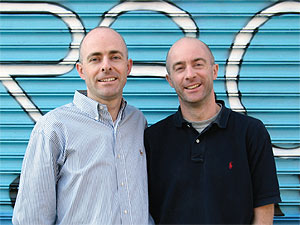 From left: Séamus and Cathal.
From left: Séamus and Cathal.
The brothers were undeterred. “We knew it would be a good vehicle to begin our journey into entrepreneurship,” Kennedy says. “We felt that if we could just get in there and keep it going for six months or a year, we were hardworking enough and smart enough and charming enough, if you will, to be able to learn the business, keep it going, and make good decisions on the fly.” Their business plan was simple, he says: “If the 80 year-old owner could still run the business, surely we could keep the place open long enough to figure something out.” Kennedy’s biggest concern was being mediocre – that they would be limited in their ability to grow the business.
Despite continuing to work at his full-time job during the first nine months as an entrepreneur, Kennedy was very much involved with Hersco. Cathal ran the business, managing the finances and production, and since the brothers lived together at that time, they were able to discuss their business performance every night over dinner, Cathal recalls.
“We had to learn fast and develop new customers and products right away,” Kennedy says. They knew, too, that the two technicians were the key to their initial success. “We did everything we could to be nice to those guys and to talk to them and to learn from them,” he says. “We bought them coffee, we sat down with them. I even learned to speak Spanish. Because we realized if we lost one of those two, we wouldn’t be able to run the business.” As it turns out, those two technicians stayed on until retirement, one in 2006 and the other in 2009.
The brothers, who are among the third generation of entrepreneurs in the family, started getting actively involved in the industry immediately after purchasing Hersco. They researched what the O&P market was doing and what was required from a business like Hersco. “We were enthusiastic; we were energetic,” Cathal says. “We were going to follow opportunity within the field. We weren’t going to keep doing what we did and hope that the market would respond. We made changes immediately. We started fabricating with new material and also changed the way we ran the business.”
Kennedy’s primary focus when he began to work at Hersco full time was to call on new customers and bring in more business. He began by calling on physicians, pedorthic shoe stores, O&P practices, and podiatrists. “I knew every podiatrist in Manhattan by name,” he says. But he knew that was not sufficient to ensure Hersco’s success. “If I was going to be successful, I needed to establish credibility quickly,” he says. At that time, the only requirement to become a Certified Pedorthist was to pass a test with the Board for Certification in Pedorthics. So he bought three textbooks, studied them, and passed the exam, he says.
Overlapping Careers
Kennedy continues to draw on his mechanical engineering background as he applies his knowledge of kinematics, materials science, and physics to his work at Hersco and as a pedorthist. “Engineering trains you to quickly grasp large and difficult problems and then begin constructing practical solutions,” he explains. “It has helped tremendously in organizing and operating the production systems and standards required for an efficient central fab. Engineering gives you an excellent basis in the physical sciences, which helps with many other aspects of fabrication.” He says that this training has been especially helpful with the implementation and use of CAD/CAM systems in Hersco’s fabrication process.
His engineering background also aids him when he reads about and teaches biomechanics, given their common foundation of applied physics. “Human gait is both complex and fascinating,” he says. “To truly understand the components of ambulation takes time and patience. By taking an analytical approach and understanding it from first principles, one gains a fuller knowledge of the whole.”
A Seeker of Knowledge
“I have always wanted to understand how things work – the nature of things – the fundamentals behind what we see,” Kennedy says. So whether he is writing an article or preparing for a presentation, he says he researches the topic at hand thoroughly, and the articles and lectures force him to “delve into the subject.”
“Séamus is at his core a seeker of knowledge,” Cathal says. “He is always fully engaged in what he is doing; he is always engaged in continuous improvement, which is part of Kaizen….” Kaizen is the Japanese business philosophy of continuous improvement; it comes from the Japanese words “kai,” which means change, and “zen,” which means good. “He takes [Kaizen] very, very seriously in that he brings continuous improvement to the business, to his personal life, to whatever he is doing,” Cathal adds. “He does everything full on. So when it comes to seeking knowledge, he reads, he researches, he understands. And he’s found that once he has that [knowledge], it’s a valuable tool that he is using to share with others…and that comes across in his commitment to education in the industry.”
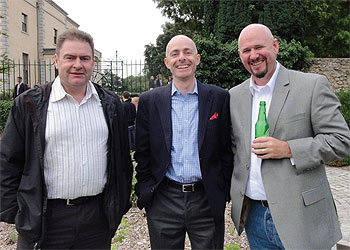
On an August 2013 trip to Dublin, Séamus (center) met up with friends at an Engineering Graduate Association gathering.
Kennedy says that he finds it rewarding to share ideas with others, simplify a concept, or explain something in a way that others can grasp. “If that can help them be a better practitioner or improve the life of a patient, then I am happy to share what little I have,” he says.
While it’s a small part of O&P, pedorthics is still an important part of the overall healthcare landscape, Kennedy says. “If you can keep people mobile and active, they will be happier psychologically. Biochemically it’s been proven you are happier if you are moving around, and it could make a huge difference to the nation. If you keep people active, their weight will be reduced, diabetes will be in better control, and blood pressure will be normalized.” The future, he says, is in preventive care.
Going Forward
Kennedy counts among his accomplishments being a husband and father, building a well-respected business, and trying to maintain a healthy work-life perspective and an optimistic outlook as he balances each of these. He enjoys staying fit and running when possible. His other great interest, he says, is the study of practical philosophy and meditation, “taking the words of the great philosophers such as Plato or Emerson and putting them into practice every day – trying to live a mindful and meaningful life. I believe you should always put your best foot forward and do the finest job you are capable of. I also believe that you can do better each time.”
He considers himself a work in progress and says he will retain that ideal until he dies. As such, challenges he and his brother have faced at Hersco – money-losing ventures involving an early CAD/CAM system that didn’t perform as expected and a prototype negative-heel shoe imported from Japan – are viewed as lessons rather than setbacks. “Taken the right way, these experiences make you stronger and perhaps a little wiser,” he says. “The future is full of potential, and I have no idea what doors may open or close as we continue this wonderful journey.”
Laura Fonda Hochnadel can be reached at laura@opedge.com









